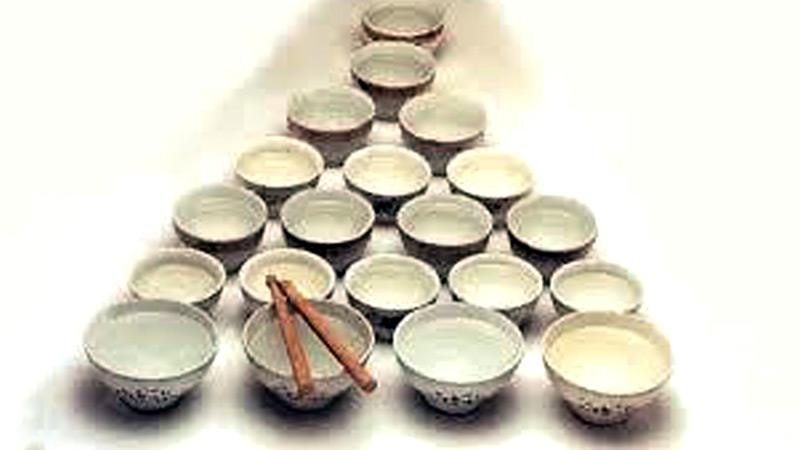
 Numerous musical instruments are in use in Indian classical music.
Numerous musical instruments are in use in Indian classical music.
Most of the musical instruments are made out of wood, metal and leather. Different varieties of strings and different thickness of strings are used for different string instruments. Among all the instruments the Jalatharang is an exceptional and unique Indian musical instrument.
The Kasht-tarang and Kanch Tarang are almost similar to Jaltharang. All these instruments are made of glass or porcelain. This particular Jaltharang instrument is called by different names in different Indian regions. In North India in Hindi language this particular instrument is called Jal tarang, and in Urdu it is called Jal-tharang.
In South India, especially in Tamil Nadu, this instrument is called Jaltharangam or Jalatharangam. In Tamil Jala means water. The instrument which uses water as the main source, due to which it has got the name Jaltharangam in Tamil.
Originally this instrument was practised and played in the South East Asian region. Especially in Bali, Java and Myanmar. It originated from the Gamelan orchestra of South East Asia. The Gamelan orchestra was an old traditional music of Balinese music. Gong of Gamelan was used with metal made tools, in different shapes for music. To bring out the sound, two thin bamboo sticks were used.
 The Jaltharang literally means water waves. This instrument is always used as the main instrument with two or three accompaniments. It is not used as an accompanying instrument like other wind, leather and string instruments.
The Jaltharang literally means water waves. This instrument is always used as the main instrument with two or three accompaniments. It is not used as an accompanying instrument like other wind, leather and string instruments.
Eighteen porcelain bowls
Normally it consists of about eighteen different size porcelain bowls in the same shape. All the bowls are arranged in such a semi circle manner in front of the Jaltharang player. The bowls are arranged in a half circle. Different size porcelain containers are arranged in a systematic manner (especially from big to small). On the left side of the Jaltharang player bigger size bowls are kept and small size bowls are kept on the right side.
All these eighteen china bowls are filled with water. Earlier the total number of china bowls used for this instrumental music was more than the present era. Today even the total number of bowls used by the artistes varies from one another. But today the maximum number of bowls used for Jaltharang is not more than eighteen.
These porcelain bowls are filled with water at rim level. The filled water porcelain bowls are played by the artiste by holding two slender sticks with both hands. When the bowls are filled with more water, the pitch or the tone level would be low. To adjust the pitch level of the Jaltharang, the player does numerous adjustments with the water level of the porcelain bowls. Excellent melodious tunes could be brought out or obtained when the bowls are stuck with sticks.
Jaltharang is popularly used in Indian music, yet practising this musical instrument is quite rare as compared to other musical instruments. This instrument is often used in South India with Violin and Mirdangam. In North Indian music even the gates of the Sitar also could be played in this Jaltharang musical instrument. Normally medium and fast tempos are used by this instrument. In South Indian music outstanding figures in the Jalatharangam musician were Subbiar and Harihara Bhagavathar. Still many more young artistes are playing this instrument.
Indian classical music Carnatic and Hindustani are quite popular in Sri Lanka but unfortunately no Jaltharang musical instrumental artiste has entered the Sri Lankan arts field.
